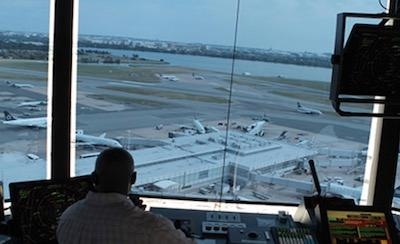Sat, Apr 27, 2024
NATCA Issues Warning To FAA On Controller Fatigue Amid ATC Understaffing
The National Air Traffic Controllers Association (NATCA) has issued a stern warning to the Federal Aviation Administration (FAA) regarding the agency's unilateral decision-making process concerning new policies aimed at addressing air traffic controller fatigue.

This comes amid growing concerns over understaffing and the subsequent strain it places on the existing workforce, potentially exacerbating the very issue the FAA seeks to mitigate.
On the morning of April 19, 2024, NATCA was briefed on a new FAA report and subsequent policy changes just moments before the information was publicly disclosed, leaving the union with little time to evaluate the potential impacts. NATCA has long advocated for more collaborative approaches with the FAA to tackle the persistent issues of staffing shortages and controller fatigue, which not only compromise safety but also the well-being of its members.
NATCA points out that the current staffing crisis is severe, with the FAA employing 10 percent fewer fully certified air traffic controllers than a decade ago and 25 percent fewer trainees compared to five years prior. This shortage has necessitated widespread mandatory overtime and six-day workweeks at numerous FAA facilities, further contributing to fatigue among controllers. In 2022, controllers at 40% of FAA facilities were required to work six-day weeks at least once per month, with several locations mandating this schedule weekly.

The union is particularly concerned that the immediate implementation of the FAA's new rules could result in significant gaps in air traffic control coverage, necessitating even more overtime to maintain national airspace system capacity. This could lead to increased fatigue, contradicting the intended purpose of the new policies.
Additionally, the FAA's staffing plans have been criticized by various oversight bodies. Last year, the Department of Transportation Inspector General concluded that the FAA continues to struggle with staffing challenges without a clear plan to resolve them, posing risks to continuous air traffic operations. Furthermore, the FAA's own National Airspace System Safety Review Team reported that the current hiring strategy would only result in a marginal increase in controller numbers by 2032, suggesting that a new approach is urgently needed.
With FAA Reauthorization on the horizon, NATCA sees a critical opportunity for Congress to intervene and ensure that a more effective staffing plan is implemented--one that not only addresses the numbers but also the quality of life for controllers. This includes meeting operational, contractual, and statutory requirements and maximizing the hiring of air traffic controller trainees over the next five years to rebuild and sustain the workforce needed to secure the safety of the flying public.
More News
Aero Linx: Transport Canada We are a federal institution, leading the Transport Canada portfolio and working with our partners. Transport Canada is responsible for transportation p>[...]
Gross Navigation Error (GNE) A lateral deviation from a cleared track, normally in excess of 25 Nautical Miles (NM). More stringent standards (for example, 10NM in some parts of th>[...]
From AirVenture 2017 (YouTube Edition): Flight-Proven Booster On Display At AirVenture… EAA AirVenture Oshkosh is known primarily as a celebration of experimental and amateu>[...]
Aircraft Parachute System (CAPS) Was Deployed About 293 Ft Above Ground Level, Which Was Too Low To Allow For Full Deployment Of The Parachute System Analysis: The day before the a>[...]
Also: 48th Annual Air Race Classic, Hot Air Balloon Fire, FAA v Banning 100LL, Complete Remote Pilot The news Piper PA-18 Super Cub owners have been waiting for has finally arrived>[...]
 ANN's Daily Aero-Linx (06.29.25)
ANN's Daily Aero-Linx (06.29.25) ANN's Daily Aero-Term (06.29.25): Gross Navigation Error (GNE)
ANN's Daily Aero-Term (06.29.25): Gross Navigation Error (GNE) Classic Aero-TV: Anticipating Futurespace - Blue Origin Visits Airventure 2017
Classic Aero-TV: Anticipating Futurespace - Blue Origin Visits Airventure 2017 NTSB Final Report: Cirrus SR22
NTSB Final Report: Cirrus SR22 Airborne Affordable Flyers 06.26.25: PA18 Upgrades, Delta Force, Rhinebeck
Airborne Affordable Flyers 06.26.25: PA18 Upgrades, Delta Force, Rhinebeck




